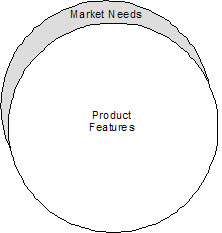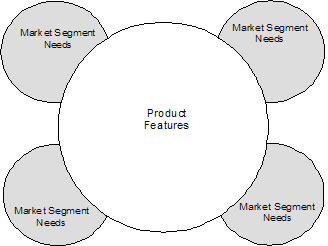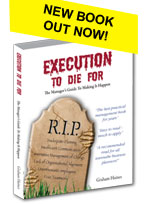1.1.5 How To Develop A Strategic Marketing Plan - HOW - Part 1
In the first of these articles - How To Develop A Strategic Marketing Plan - NOW, it was explained that a Strategic Marketing Plan - or Commercial Plan - consists of five components.
- Activities - now and in the future
- Markets served - now and in the future
- Products/Services provided - now and in the future
- Competitive Strategy
- Competitive Advantage
The next article addressed the second stage of the planning process - WHERE.
This one looks at the third stage - HOW.
The NOW stage - situation analysis - looked at the impact of the external and internal environments on the WHERE stage - the goal and the objectives. The goal and the objectives are expressed in terms of the Activities the company undertakes, the Markets served and the Products and Services provided.
The HOW stage considers the strategies by which the goal and objectives might be achieved. This stage corresponds to components four and five - Competitive Strategy and Competitive Advantage.
The need for a Competitive Strategy
The reason why every firm needs a competitive strategy is that no company can be equally brilliant at everything it does and meet with equal proficiency every need that every potential customer in a particular product market might have.
Before competition became so intense, this did not matter so much. Customer needs were more basic and more uniform. Competition among suppliers tended to centre on the features of the core product.
This situation is illustrated in Figure 1 - one large segment containing customers with broadly similar needs satisfied by core product features.
Figure 1 - Large undifferentiated market needs matched by basic core products

Figure 2 shows the market fragmenting into four distinct segments whose needs are either different per se or, if the same, have different priorities. The match between market needs and product features deteriorates.
Figure 2 - Distinct market segments with particular needs mismatched with undifferentiated product offerings

The solution is clear.
Focus on the needs of individual segments and provide products to match, the philosophy being that it’s much better to satisfy the needs of a smaller segment extremely well than it is to satisfy the needs of many segments averagely well.
The “perfect match” is shown in Figure 3.
Figure 3 - Product features designed to match the needs of one particular segment

The above is the rationale behind the need for companies to develop a generic Competitive Strategy of which there are three .
Companies can elect to compete on the basis of offering:
- Best Product
- Best Total Cost
- Best Total Solution
These three strategies can be summarised as follows:
Best Product - Product leadership
| Marketing strategy | Target those that want the best or latest |
| Operational focus | Entrepreneurial environment, speed to market, marketing/promotional expertise |
| Organisational culture | Flexible, small teams, encouragement of individual contributions, thinking outside the square |
| Investment priorities | Research & development, product marketing |
| Pricing strategy | Charge a premium for providing best/latest |
| Promotional focus | On product attributes - what’s different & better |
| Success driven by | Innovative products |
This is probably the toughest of the three strategies because unless the product that gave you product leadership has a long product life cycle or is protected by strong patents, it will need to be followed up by a succession of equally successful products for this strategy to remain successful.
The adoption of Best Product is more likely to succeed if the products in question are highly differentiated. For example, it can be argued that all car companies compete on the basis of Best Product because their success is very closely tied to the consumer appeal of each model they supply.
Best Total Cost - Operational excellence
| Marketing strategy | Target those segments with very similar needs |
| Operational focus | Customer service, team work, systems & logistics - superior balance between people & IT systems |
| Organisational culture | One that abhors waste, promotes teamwork and rewards efficiency |
| Investment priorities | Information Technology & Infrastructure |
| Pricing strategy | Competitive pricing - focus on value for money |
| Promotional focus | Consistency, reliability, quality, value |
| Success driven by | Sales growth |
Best Total Cost = Price + Convenience + Risk reduction
Relationship between supplier & customer - FRICTIONLESS
This competitive strategy is often the way to go if product differentiation is low, customer needs are similar, and there are a significant number of direct competitors. As the above indicates, Best Total Cost is a combination of Price, Convenience and Risk reduction.
The difference in prices between the lowest and the highest in such markets is small in percentage terms and so the battle for sales is fought out on “how easy it is to do business with the supplier” (convenience) and the consistency of product quality, product availability, delivery and customer service (risk reduction).
Best Total Solution - Customer intimacy
| Marketing strategy | Target those that have different and particular needs |
| Operational focus | Building partnerships at all levels and in all areas |
| Organisational culture | One that embraces specific rather than general solutions and builds deep and lasting customer relationships - a people company - decentralised and empowered decision making |
| Investment priorities | Low overheads, investment in Account Managers |
| Pricing strategy | Differential pricing between customers |
| Promotional focus | People, partnerships, customised solutions |
| Success driven by | Customers’ successes |
Relationship between supplier and customer - SEAMLESS
This is a strategy that is often the best option for service providers - particularly those of professional services. It works best when the product can be tailored to a particular customer’s unique set of requirements from the product itself to the nature and intensity of commercial and technical services.
It’s based on forging such a close relationship between supplier and customer that it is difficult to distinguish where the border between the two entities lies. That’s why the adjective “seamless” has been used to sum up the competitive strategy of Best Total Solution.
It is frequently a difficult choice to make between these three generic strategies as it is unlikely that your present strategy will be 100% one or the other. But making a conscious decision to opt for one of the three is rewarded by the focus it provides and by the presence of clear decision-making criteria when it comes to investment.
For instance, if Best Total Cost has been adopted and a choice needs to be made between investment in product development and a new IT system to improve on-time delivery, the decision is clear cut.
Competitive Advantage
Competitive advantage is the fifth and last component of the Strategic Marketing Plan.
It is more than likely that your closest competitors have adopted the same generic strategy as you have, particularly if that strategy is Best Total Cost or Best Total Solution. After all, they operate in the same business environment. By definition, Best Product, although it is more difficult to achieve (and even more difficult to sustain) does provide a clear point of differentiation.
However, in two out of three cases, the adoption of a particular competitive strategy does not, in itself, create a competitive advantage. You need to identify something that you do better than your competitors and that differentiates you from being “just another supplier”. Furthermore, that differentiator has to be something that the customers in your market segment value.
Being regarded by current and prospective customers as “just another supplier” is a difficult position to be in. Not only will you find yourself competing on the basis of price but also your prices will be under constant pressure.
How to identify and exploit a competitive advantage will be the last topic to be addressed in this series of articles on developing a Strategic Marketing Plan.
Go to next article in the series - How To Develop A Strategic Marketing Plan - HOW - Part 2






